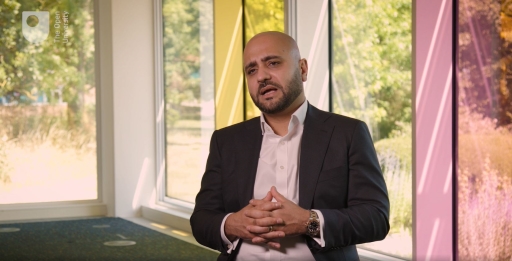1.2 Communication
There are a number of ways in which good communication can play a part in making your workplace more inclusive, including:
- understanding barriers to effective communication
- learning the skill of active listening, where you can listen attentively to a speaker, understand what they’re saying, respond and reflect on what’s being said, and retain the information for later (Bergeron & Loignon, 2024).
- learning to avoid communication errors, such as using incorrect or inappropriate terminology
- developing the communication skills required to have honest, challenging and sometimes uncomfortable conversations
- clearly communicating your organisation’s vision for inclusivity, and the expectations for all staff members
- clear delivery of training to ensure that key messages are communicated, and appropriate actions are taken
- creating a safe space for everyone to communicate their feelings and experiences, and to be heard
- using communication to network effectively and increase social capital.
Asif Sadiq talks here about the importance of listening and creating safe spaces for everyone to be heard.

Transcript: Video 3: Creating safe spaces
Humphrey (2015), recommends several tips for enhancing communication to promote workplace diversity. While Humphrey’s article is focused on workplace communication between men and women, particularly at a leadership level, you’ll see that her advice is applicable more widely across the diversity spectrum:
- listen more closely and more often – a person who doesn’t feel heard will often withhold their views. Invite everyone to participate in the conversation by asking for their ideas and opinions.
- don’t interrupt – being interrupted can make the speaker feel their point is of little value. Listen until they have finished speaking and then ask for clarification if you need to.
- don’t step in to explain for others e.g. ‘What X is trying to say is…’ – this can appear patronising. Instead, offer a reinforcing statement, such as ‘You raise an important issue’ and then ask them to clarify their position.
- consider your attitude – avoid a strong tone of voice, and condescending expressions like ‘Really?’ or ‘Prove it!’ This can cause people to become defensive. Adopt a supportive tone and encourage everyone to share their ideas.
- watch your body language – make eye contact with the speaker, show warmth with your facial expressions, and don’t fold your arms or make any other gesture that appears cold or closed off.
Another important element of communication in a diverse workplace relates to cross cultural communication. Watch this short video from the American Management Association to hear more:
Activity 2 Communicating with colleagues
Consider the following scenario:
You’re leading a work meeting with a culturally diverse group of colleagues. You want to discuss a sensitive issue. You want to hear everyone’s opinions about it so you can make an informed decision about how to proceed. You introduce the topic, and two members of the team become quite heated in their debate. But while they are clearly focusing on the conversation, no-one else contributes.
What could you do next to encourage their input? Make some notes in the box below.
Comment
Depending on the different cultures represented in the meeting, it is possible that several of the team might feel deeply uncomfortable sharing their views openly in this type of forum. If they were disinterested and failing to concentrate, there might be other reasons for their lack of enthusiasm, but if their non-verbal cues or body language suggest engagement, something else must be stopping them from speaking up.
Knight (2015) has the following advice:
- be aware of the variations that exist among cultures and how those differences play out in the workplace
- create protocols and establish norms so that your colleagues understand how meetings will run
- incentivise colleagues to step outside their cultural comfort zones
- remember people are capable of adapting and adjusting their cultural default
- solicit colleagues’ opinions in other venues and encourage people to provide feedback in different ways
- encourage colleagues to get to know each other outside of meetings so that cultural differences won’t seem as glaring.
Asif Sadiq summarises his thoughts on culture as follows:


